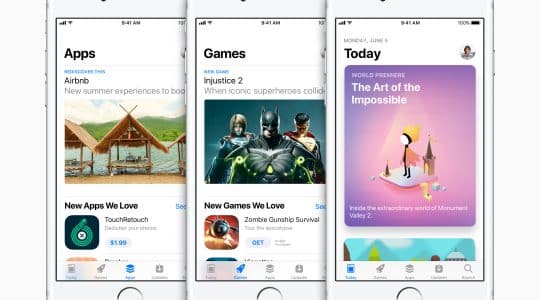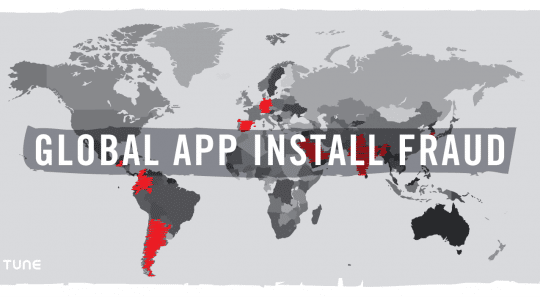Understanding how difficult it is to rank for a keyword is an important part of the app store optimization process and strategy. If you have two keywords, A and B, and A is very difficult to rank for but has a high search volume, and B is easier to rank for but has lower search volume, which one should you target? Our newest whitepaper helps answer part of this question, but before you begin, you need to first determine how hard both keywords A and B are to rank for. When we calculate the difficulty score in our product, the two main metrics we consider are result count and volatility. However, if you want to run your own analysis, here is how to figure out how difficult a keyword is in three easy steps.
Step 1: Result Count
 Result count is the first, and easiest, step of the process. It helps determine how many apps are targeting a specific keyword, i.e. how ‘popular’ it is. For iOS, apps can only show up for a keyword if it’s in their title, keyword field, publisher name, or in-app purchases (these are the sources we know about – they also may include review language and description). In Google Play, apps can only rank for a keyword if they target it in their title, description, or if it’s used in their reviews or anchor text linking to their Google Play page (again,these are just the sources we are aware of.
Result count is the first, and easiest, step of the process. It helps determine how many apps are targeting a specific keyword, i.e. how ‘popular’ it is. For iOS, apps can only show up for a keyword if it’s in their title, keyword field, publisher name, or in-app purchases (these are the sources we know about – they also may include review language and description). In Google Play, apps can only rank for a keyword if they target it in their title, description, or if it’s used in their reviews or anchor text linking to their Google Play page (again,these are just the sources we are aware of.
So how do you find result count? Don’t worry, it’s nothing fancy. If you have a phone you can do it. You simply search for the term in the app store. Both Apple and Google with show you how many apps show up for that keyword. It’s important to compare result count of each keyword relative to all the other ones you care about. It may be that all the keywords that might be relevant to your app have more or less apps targeting it than that average.
Step 2: Volatility
Once you know how many apps are targeting a keyword, the next metric you’ll want to consider is volatility. This is important because it’s an indicator of how hard it will be to move up the rankings for that keyword. We often see terms that only have 50 apps targeting it, but where the volatility is low (meaning that the apps’ rankings are not changing much). These can be harder to rank for than words that have a lot of apps targeting it, but also have high volatility.
Calculating volatility manually is difficult. We’ve been tracking millions of data points every day for the last few years, so we have a lot of information to work with when we create our metric. If you’re going to do it yourself, there are two ways to go about it.
The first way is to search for the keyword you’re interested in every day for a week (or two weeks if you want to be more accurate) and record the top 10 or 20 apps that rank for it along with their respective ranking position. You can then look back over the data, calculate the average daily ranking change for each app, and then average those numbers for all the apps you tracked. Over the last 30 days, the average ranking change that we’ve seen for all the apps in the iOS app store is 3.22 spots per day. Again, this is nice information to know, but you really only care about the volatility of the keyword compared to all the other terms you care about.
The second way you can do this is faster, but gives you a visual idea of volatility rather than a quantitative one. You’ll want to search for the term you’re interested in, and add the top app in an ASO tool. You can then add the rest of the top 10 or 20 appa as competitors. Once you create a report for the keyword you’re interested in, you’ll be able to see how the rankings for all those apps have changed over the last 30 days. If there is a lot of crossover and movement in the graph, there is higher volatility. If the lines are flat, like the graph below, there is low volatility.

Step 3: The Top 10
The last thing you will want to take into consideration is the top 10 apps that rank for a keyword. This is a simple step as well. You’ll want to look through the top 10 apps that rank for a keyword and look at how many ratings each app has, what their current rating is, and how recognizable the brand name is. This is an example of a top 10 you’d want to avoid:

Our most recent study revealed that 86% of the apps downloaded via search are in the top 10, and 51% of the apps chosen were big brands. Your goal should be to break into the top 10 of at least a few of your keywords, but you also need to be aware that if you’re a lesser-known company competing against bigger brands, the odds are that the consumer will go with the brand they’ve heard of.
Once you’ve completed all these steps, you can take all those factors into consideration and rank each keyword based on how hard you think it will be to rank for it. If you have anything else you like to consider or any questions, feel free to reach out via Twitter or email at [email protected]. If you don’t want to hassle with these steps, sign up for a free account today and we’ll do the legwork for you!
Author
Becky is the Senior Content Marketing Manager at TUNE. Before TUNE, she handled content strategy and marketing communications at several tech startups in the Bay Area. Becky received her bachelor's degree in English from Wake Forest University. After a decade in San Francisco and Seattle, she has returned home to Charleston, SC, where you can find her strolling through Hampton Park with her pup and enjoying the simple things in life.

![The Road to Mobile Engagement [Infographic]](https://www.tune.com/wp-content/uploads/2018/11/cpi-cpa-applift-infographic-540x300.jpg)


This helped me a lot in figuring out what keywords to target for my new app. I would have been going after some really tough competition if I didn’t come across this. Thanks!